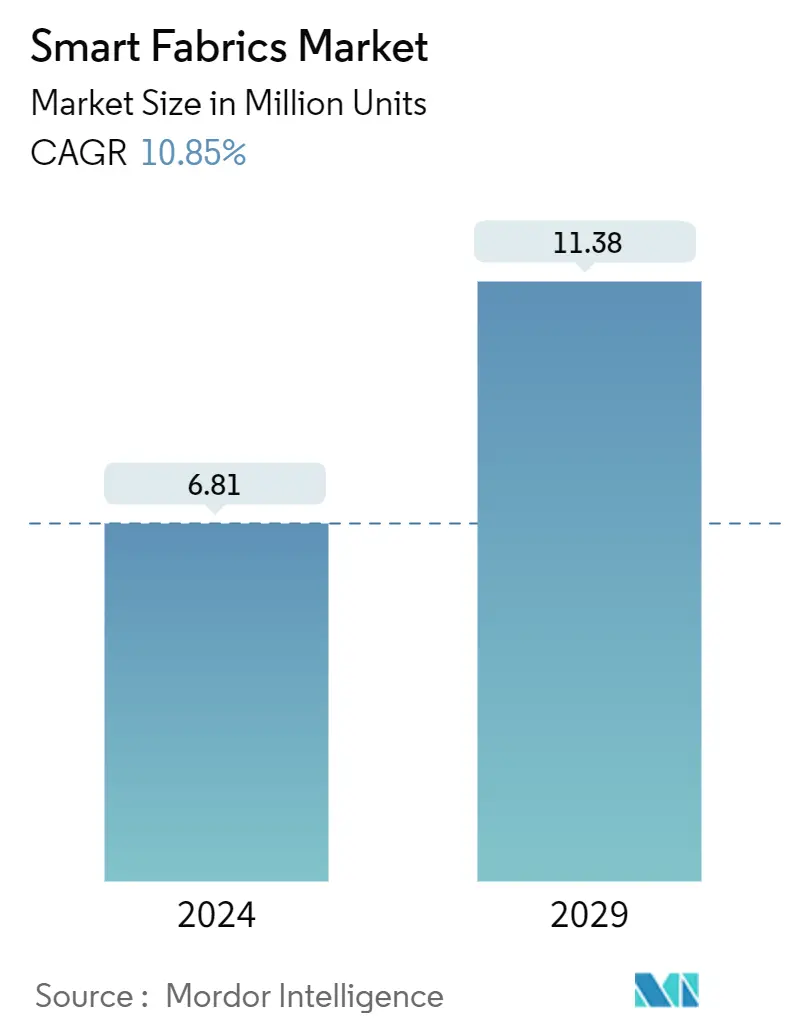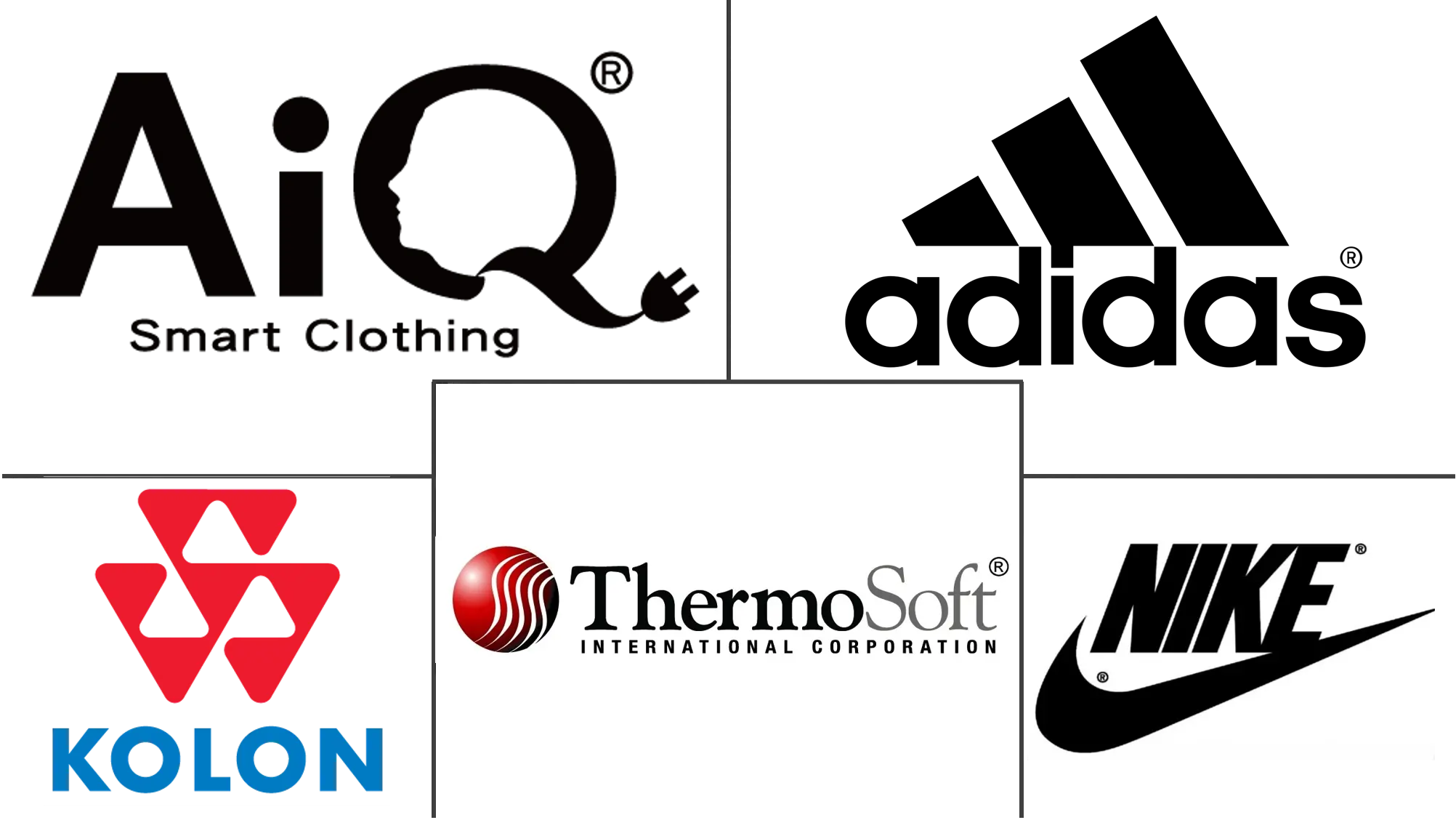Market Size of Smart Fabrics Industry

| Study Period | 2019-2029 |
| Market Volume (2024) | 6.81 Million units |
| Market Volume (2029) | 11.38 Million units |
| CAGR (2024 - 2029) | 10.85 % |
| Fastest Growing Market | Asia Pacific |
| Largest Market | North America |
Major Players
*Disclaimer: Major Players sorted in no particular order |
Need a report that reflects how COVID-19 has impacted this market and its growth?
Smart Fabrics Market Analysis
The Smart Fabrics Market size is estimated at 6.81 Million units in 2024, and is expected to reach 11.38 Million units by 2029, growing at a CAGR of 10.85% during the forecast period (2024-2029).
Smart textiles are fabrics that are manufactured and designed to integrate technologies that offer the user increased functionality. R&D toward wearable textile-based personal systems, such as health monitoring, protection and safety, and healthy lifestyles, gained major interest over the last few years. Recently, MIT developed smart clothing that follows the most important indicators of human health, i.e., heart rate, respiratory rate, and temperature. This was achieved by sewing into the fabric of sensitive sensors that fit the skin.
- The growth in the wearable electronics industry is driving the market. The growing demand for smart wearables across various end-user industries is the major factor driving the growth of the smart fabric market. A significant amount of effort is witnessed to expand what fabric wearables can do with respect to payments. Mastercard partnered with Timex to integrate contactless payments into their watches, while a U.K.-based CashCuff did the same with the cufflinks. When such distinguished applications become mainstream, which it has, the market is very likely to shift to accommodate similar trends in smart fabrics.
- Miniaturization of electronics and developments across flexible electronics is driving the market. The efficiency of smart fabrics is enhancing with the advancement in miniaturized electronic items, such as sensors, actuators (for active smart textiles), and controlling units (advanced smart textiles). Significant expertise in multifunctional plastics manufacturing, nanoscale manufacturing, and printed electronics has been seen. For instance, UMass Lowell develops flexible electronics and smart textiles-some ongoing research projects. We are developing high-frequency printed conformal antennas, carbon-based transistors, and photonic devices and researching wearable antennas for the military.
- Further, the developments on wearable triboelectric nanogenerators in shapes of fiber, yarn, and textile enable a signficant development in the market studied. These nanogenerators, when effectively integrated with devices such as supercapacitor, lithium battery, and solar cell, their feasibility for realizing self-charging wearable systems have been proven to attract the attention of smart wearables.
- For instance, Nextiles, a textile manufacturing firm, recently entered the sports and performance industry with smart thread technology that records physiological and biomechanical data. The flexible cloth used in everyday sportswear was created by Nextiles by fusing conventional stitching methods with printed circuit boards. Nextiles' fabrics enable biomechanic and biometric sensing recorded on one platform owing to the patented production technique.
- Further, with the outbreak of COVID-19, the market did not experience substantial growth. This is because manufacturing smart fabric needed a high degree of automation and advancements in textile processing techniques such as electronic controlling system, computer-aided design, automated inspection, etc. The industry did not come under the essential services segment as it was considered in the 'apparel and lifestyle goods' category, resulting from which factories were currently not under operations.
